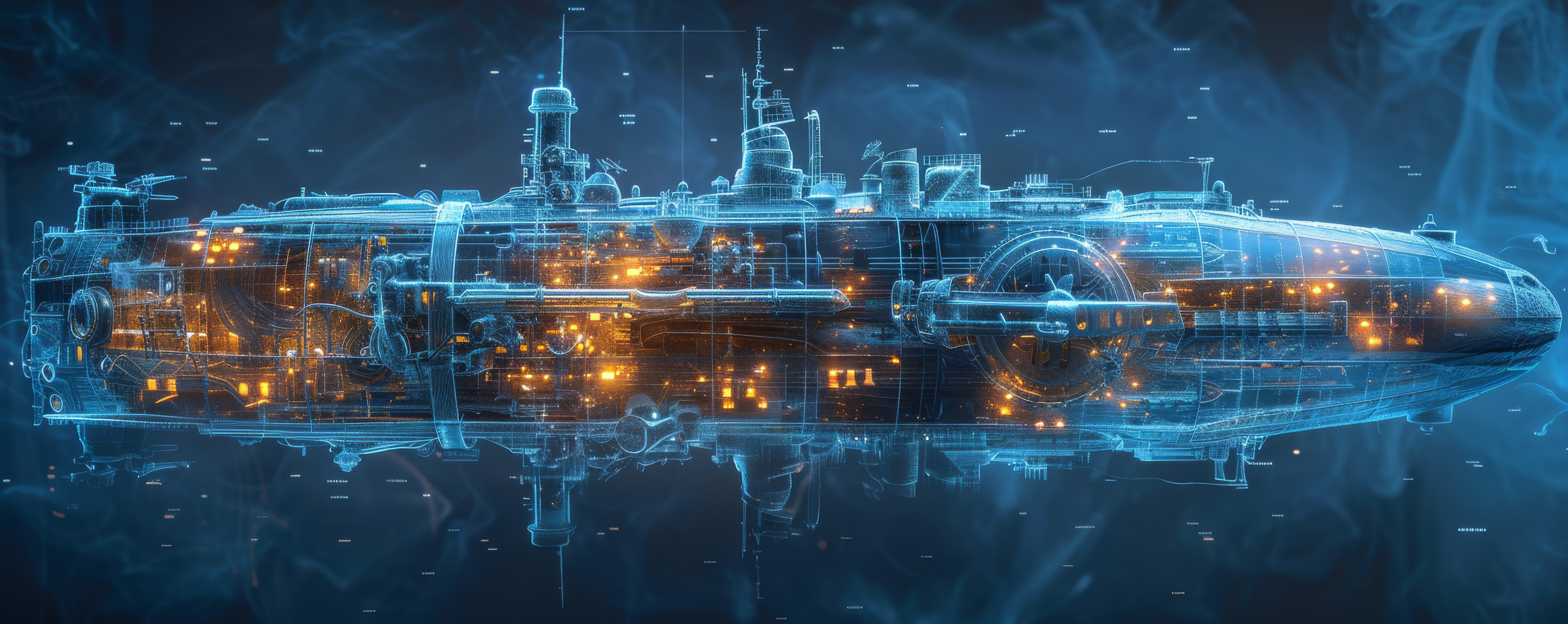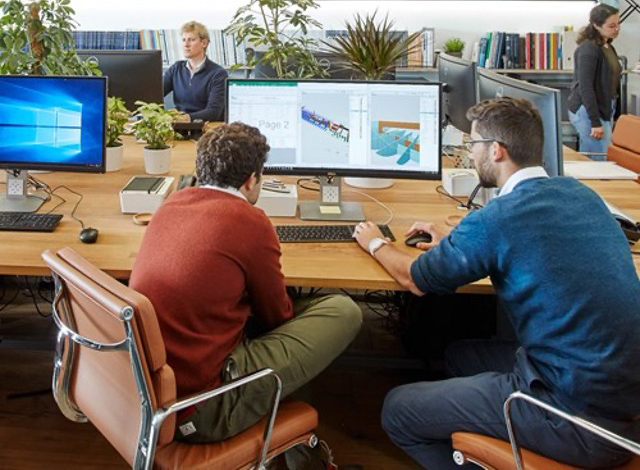
Naval Architect - Submarines
Welcome, young submarine enthusiasts!
This field opens doors to solving real-world challenges like sustainable ocean travel, naval defence, and advanced marine exploration. If you love the sea, enjoy solving puzzles, and have a passion for innovation, naval architecture could be your path to shaping the future of marine technology!

A submarine naval architect specializes in designing, constructing, and maintaining submarines. Their role involves a variety of tasks, including:
Naval architects are engineers responsible for the design, construction and repair of seafaring vessels, including ships, boats and offshore structures.
In practice we apply mathematical and physical principles to design and maintain ships to be as safe and efficient as practically possible.
We use a combination of experiments and computer modelling to achieve these goals.

Submarines stay submerged by using a system of ballast tanks and trim tanks.
Here’s how it works:
Ballast Tanks: These tanks can be filled with water or air. When a submarine needs to dive, it fills the ballast tanks with water, increasing its weight and causing it to sink. To surface, the submarine pumps air into the ballast tanks, forcing the water out and making the submarine buoyant again.
Trim Tanks: These are used to adjust the submarine’s balance and angle. By moving water between different trim tanks, the submarine can maintain a stable and level position underwater.
Neutral Buoyancy: When a submarine is at the desired depth, it adjusts the amount of water and air in the tanks to achieve neutral buoyancy, where it neither sinks nor floats.
This system allows submarines to control their depth precisely and stay submerged for extended periods.
What does a BMT Naval Architect do?
At BMT our submarine Naval Architects work in one big team and cover key areas of submarine design. We split our time between designing future submarines and looking after the ones in service.

Naval Architecture and Engineering are broad subjects requiring lots of skills.
Entering a career in Naval Architecture involves a combination of education, skill development, and professional experience.
Here’s a step-by-step guide on how to pursue a career in Naval Architecture globally:
Degree route
Attend: Sixth form or college
Qualification:
Subjects:
Attend: University
Qualification: BEng/MEng in Naval Architecture or Maritime Engineering
Study:
Apply to BMT in your final year of university
Attend: BMT
Role: Graduate Naval Architect
Experience:
Attend: BMT
Role: Naval Architect
Experience: Choose a team and start developing your specialism.
* These timelines are indicative to give you an idea of the sort of path you might wish to take. There is some room for flexibility based on your academic aspirations.
Apprenticeship route
Attend:
Qualification: Level 3 Engineering Diploma
Subjects: Engineering related units/subjects
Attend: BMT
Role: Naval Architect Apprentice
Qualification: Level 4 - HNC
Study: Engineering related units/subjects
Attend: BMT
Role: Naval Architect Apprentice
Qualification: Level 5 - HND
Study: Engineering related units/subjects
Attend:
Role: Naval Architect
Qualification: Part time degree
Study: Any course that’s applicable to work at BMT.
Attend: BMT
Role: Naval Architect
Experience: Choose a team and start developing your specialism.

Alex is a Senior Naval Architect for BMT, undertaking a broad range of tasks from concept design to life extension and work on laid-up submarines. He works primarily in the submarine domain, working with the UK MoD and overseas clients.
What do you do?
As a Naval Architect, I mainly focus on the stability, layout, weight, and structure of a vessel. I do this for all stages of the life cycle, from early pre-concept design through to end of life.
How did you get there?
I was lucky enough to realise that I wanted to “design ships” at a fairly young age and with that direction I took a fairly conventional path through school and university.
Who inspired, helped and supported you?
It’s impossible to pick any one person and there was no clear inspiration other than an interest in the sea, but I am incredibly grateful for all the people who gave me the space to be me and supported my choices.
What do you enjoy about your role?
Problem solving through creativity - I always enjoy finding new and alternative solutions to problems, especially the big problems that get posed at the concept design phase.
Has your role provided you with any exciting opportunities?
Yes, I’m very lucky to have been given an insight to many different projects from design changes where I see my ideas become reality, to blue sky ideas where I feel like I’m pushing the bounds of what’s possible and defining the future.
What has surprised you most about your role?
That I can do it! Putting in the hard work to learn the necessary skills pays off and each of us brings their own individuality and creativity to the table.
What advice would you give your younger self?
Keep going and believe in yourself. Focus on the next step towards your goal and it is possible to eat an elephant by taking one bite at a time.

"I see my ideas become reality, to blue sky ideas where I feel like I’m pushing the bounds"